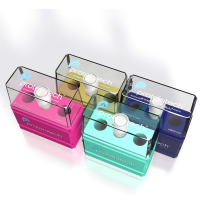Incorporation of Genetically Modified Cells in Chicken Chimeras
互联网
623
The production and study of transgenic mice has proven invaluable in dissecting the complex genetic regulatory events that control mammalian development. Although the chick embryo is a classic model system in developmental biology, its scope is limited by the inability to routinely and efficiently produce transgenic birds. One proposed strategy toward accessing the avian genome is the use of transgenic chimeric intermediates. As described in Chapter 37, dispersed chicken blastodermal cells (CBCs) from stage X (E-G&K) (1 ) embryos produce both somatic and germline chimeras when injected into the subgerminal cavity of recipient stage X (E-G&K) embryos. Transfection of the donor cells in vitro could lead to the production of chimeras capable of transmitting the transgene to their offspring. Avian transgenesis through chimeric intermediates is theoretically sound because CBCs can be efficiently transfected using both lipofection and electroporation and both lipofected and electroporated CBCs are capable of contributing to somatic and germline lineages (2 -5 ). Transfection using liposome reagents has the disadvantages of requiring extended incubations and optimization of DNA/lipid ratios for each construct used. Although electroporation requires access to relatively expensive equipment, it is a rapid, physical method that may have fewer adverse effects on the pluripotentiality of transfected CBCs. Therefore, both transfection protocols are described in this chapter.








